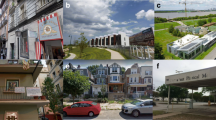Abstract
In this study, similarity networks are used to analyse the diffusion of fired bricks across Hellenistic Europe, initiated in the north Aegean in the fourth century BCE. In a similarity network, archaeological contexts with similar attributes are connected according to a predefined criterion, and the edges are interpreted as potential social or causal links. Here we allow any kind of similarity relation between brick contexts as a criterion for connection, where different kinds of attributes can be mixed. The analysis suggests that there was indeed a diffusion process, as opposed to random, independent appearances of fired bricks. This diffusion seems to have taken place in a small-world social network of builders and decision-makers, where the range of most connections was shorter than 250 km but where long-range connections were also present. The data seemingly exclude a scale-free network, in which the diffusion is governed by a few dominant hubs. An early cluster of homogeneous brick usage appears in the south-eastern part of Hellenistic Europe, as well as a late cluster in the north-west. In the late cluster, the homogenisation applies to larger constructions (public or military) than in the early cluster (mainly sepulchral), suggesting that the use of fired bricks became established at higher societal levels in the last century BCE.



















Similar content being viewed by others
Notes
More information about the program and the numerical analysis can be found at http://projekt.ht.lu.se/lateres
References
Adam, J.-P. (1994). Roman building: materials and techniques. Transl. A. Mathews. Bloomington: Indiana University Press.
Albert, R., & Barabàsi, A.-L. (2002). Statistical mechanics of complex networks. Reviews of Modern Physics, 74(January), 47–97.
Bentley, R. A., & Maschner, H. D. G. (2003). Complex systems and archaeology. Salt Lake City: University of Utah Press.
Blake, M. E. (1947). Ancient Roman construction in Italy from the Prehistoric period to Augustus. Washington D.C.: Carnegie Institution of Washington.
Blake, M. E. (1959). Roman construction in Italy from Tiberius through the Flavians. Washington D.C.: Carnegie Institution of Washington.
Bloch, H. (1947). I bolli laterizi e la storia edilizia romana: contributi all’archeologia e alla storia romana. Roma: Comune di Roma, Ripartizione antichità e belle arti.
Boëthius, A., & Ward-Perkins, J. B. (1970). Etruscan and Roman architecture. Baltimore: Penguin.
Brodribb, G. (1987). Roman brick and tile. Gloucester: Alan Sutton Publishing.
Brughmans, T. (2010). Connecting the dots: towards archaeological network analysis. Oxford Journal of Archaeology, 29(3), 277–303.
Brughmans, T. (2013). Thinking through networks: a review of formal network methods in archaeology. Journal of Archaeological Method and Theory, 20(4), 623–662.
Campbell, J. W. P. (2003). Brick: a world history. London: Thames & Hudson.
Choisy, A. (1873). L’art de bâtir chez les romains. Paris: Ducher.
Cipolla, C. M. (1972). The diffusion of innovations in Early Modern Europe. Comparative Studies in Society and History, 14(1), 46–52.
Collar, A., Coward, F., Brughmans, T., and Mills, B. J. (2015). Networks in archaeology: phenomena, abstraction, representation. Journal of Archaeological Method and Theory.
Cozzo, G. (1936). Una industria nella Roma imperiale: la corporazione dei figuli ed i bolli doliari. Rome: Accademia dei Lincei.
de Nooy, W., Mrvar, A., & Batagelj, V. (2005). Exploratory social network analysis with Pajek. Cambridge: Cambridge University Press.
Durm, J. (1885). Die Baukunst der Etrusker. Die Baukunst der Römer. Darmstadt: J. Ph. Diehl.
Gerding, H. (2006). The early use of fired bricks in Hellenistic and Roman architecture. In C. C. Mattusch, A. A. Donohue, & A. Brauer (Eds.), Acta of the XVIth International Congress of Classical Archaeology, Boston, 2003 (pp. 355–358). Oxford: Oxbow Books.
Gerding, H. (forthcoming). Later, laterculus and testa—new perspectives on Latin brick terminology.
Gerding, H., & Östborn, P. (forthcoming). The diffusion of fired bricks in Hellenistic Europe.
Hägerstrand, T. (1967). Innovation diffusion as a spatial process. Chicago: University of Chicago Press.
Kandler, A., & Laland, K. N. (2009). An investigation of the relationship between innovation and cultural diversity. Theoretical Population Biology, 76(1), 59–67.
Kandler, A., & Steele, J. (2009). Innovation diffusion in time and space: effects of social information and of income inequality. Diffusion-Fundamentals Organization, 11(3), 1–17.
Knappett, C. (2011). An archaeology of interaction: network perspectives on material culture and society. Oxford: Oxford University Press.
Knappett, C. (2013). Network analysis in archaeology: new approaches to regional interaction. Oxford: Oxford University Press.
Lugli, G. (1957). La tecnica edilizia romana. Rome: Presso Giovanni Bardi.
MacDonald, W. L. (1982). The architecture of the Roman Empire I, an introductory study (Rev. ed.). New Haven: Yale University Press.
Malkin, I., Constantakopoulou, C., & Panagopoulou, K. (2009). Greek and Roman networks in the Mediterranean. London: Routledge.
Moorey, P. R. S. (1994). Ancient Mesopotamian materials and industries: the archaeological evidence. Oxford: Clarendon.
Östborn, P., & Gerding, H. (2014). Network analysis of archaeological data: a systematic approach. Journal of Archaeological Science, 46(June), 75–88.
Östborn, P., & Gerding, H. (forthcoming). Hellenistic brick makers, builders, and commissioners: modelling social networks to fit archaeological data.
Rogers, E. (2003). Diffusion of innovations. New York: Free Press.
Valente, T. W. (1995). Network models of the diffusion of innovations. New York: Hampton Press.
Van Deman, E. B. (1912). Methods of determining the date of Roman concrete monuments II. American Journal of Archaeology, 16(3), 387–432.
Watts, D. J. (2002). A simple model of global cascades on random networks. Proceedings of the National Academy of Sciences, 99(9), 5766–5771.
Wejnert, B. (2002). Integrating models of diffusion of innovations: a conceptual framework. Annual Review of Sociology, 28(August), 297–326.
Author information
Authors and Affiliations
Corresponding author
Rights and permissions
About this article
Cite this article
Östborn, P., Gerding, H. The Diffusion of Fired Bricks in Hellenistic Europe: A Similarity Network Analysis. J Archaeol Method Theory 22, 306–344 (2015). https://doi.org/10.1007/s10816-014-9229-4
Published:
Issue Date:
DOI: https://doi.org/10.1007/s10816-014-9229-4




